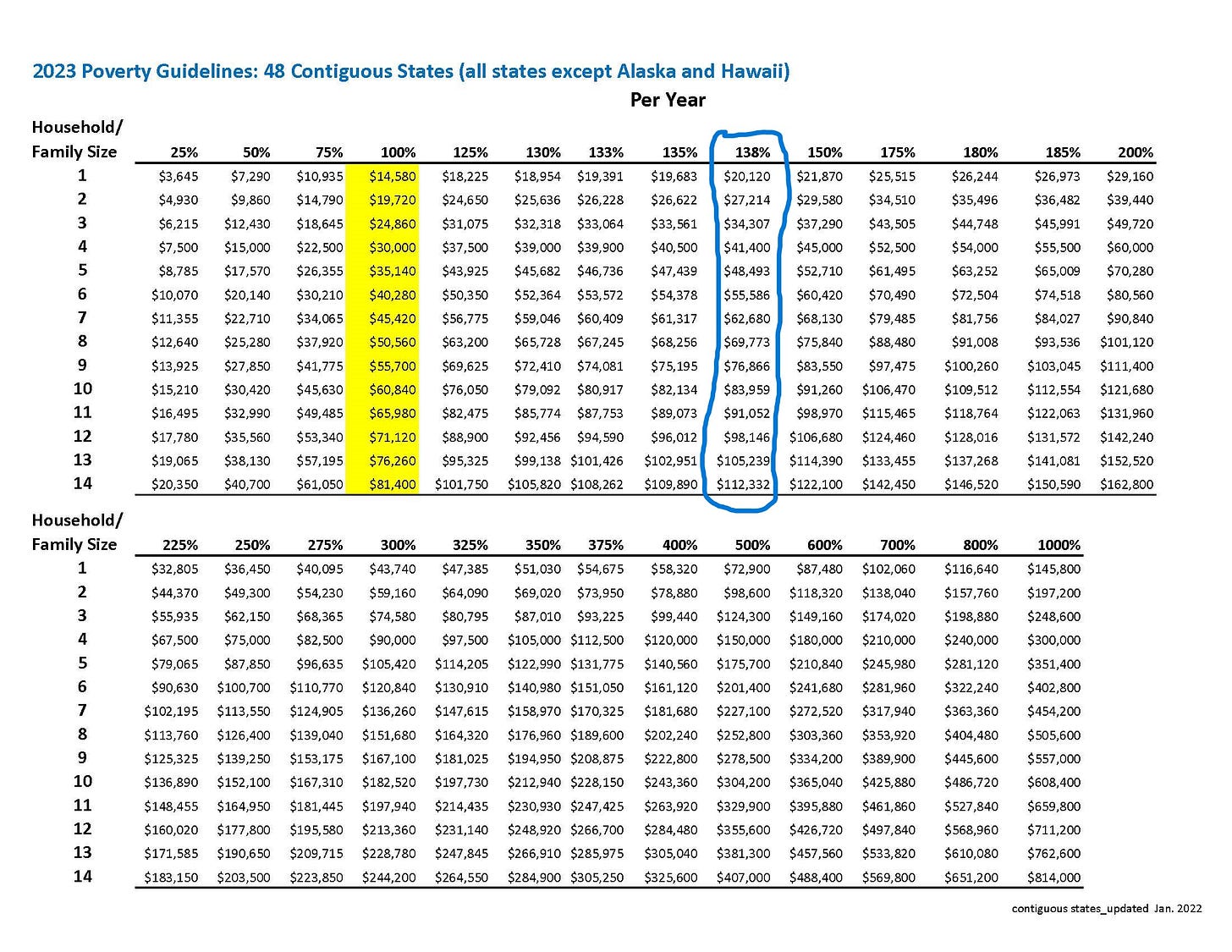Empowering Employment: How Medicaid Expansion Opens Doors for People with Disabilities
Understanding Medicaid Expansion, Waiver Supports, and Income Rules to Help People with Disabilities Work While Keeping Essential Benefits
As promised in last week’s article, I’m diving into Medicaid Expansion (link to YouTube video if you’d prefer to watch/listen). Brought about by the Affordable Care Act (ACA), Medicaid expansion is designed to extend health insurance coverage to more low-income adults. As of early 2024, 40 states and Washington, D.C., have expanded Medicaid.
For people with disabilities, Medicaid expansion isn’t just about access to healthcare Perhaps more importantly it’s also a pathway to employment and financial independence because having Medicaid is a prerequisite to receiving Medicaid Waiver support. As a reminder, the (4) broad categories of Medicaid Waiver support are
Personal Supports
Employment (Vocational) Support
Community Living (Meaningful Day) Support
Residential Support
Understanding Medicaid Expansion
Medicaid expansion opens Medicaid eligibility to adults under 65 who earn up to 138% of the federal poverty level (FPL). Before the ACA, Medicaid was primarily available to specific low-income groups like pregnant women, children, and individuals with disabilities. Expanding Medicaid has increased the number of eligible adults, allowing more people to access crucial healthcare.
Not every person with a disability is going to qualify for Supplemental Security Income (SSI). Some will be working minimum-wage jobs, and/or part-time, without health insurance. For example, let’s say you earn $15/hour but can only work 20 hours a week. Your annual income would be $15,600/year. If you live in a state that has expanded Medicaid you could keep any Waiver services you are receiving.
The below picture is meant to be an example, the numbers are old. If you’re interested in seeing what the current year’s numbers are I encourage you to check out KFF’s article “Explaining Health Care Reform: Questions About Health Insurance Subsidies”. They include 2025’s values.
ASPE website: https://aspe.hhs.gov/topics/poverty-economic-mobility/poverty-guidelines
It’s not “just” about making sure people with low incomes can keep their Medicaid. In this article, some states will allow you to “buy in” to Medicaid. Again, my focus is on how this can help those with disabilities work AND keep their Medicaid Waiver.
For many Medicaid recipients, employment doesn’t necessarily mean losing coverage. Each state has its own rules around income limits and work eligibility for Medicaid. Here’s what you should know:
Keep reading with a 7-day free trial
Subscribe to Waypoints to keep reading this post and get 7 days of free access to the full post archives.




